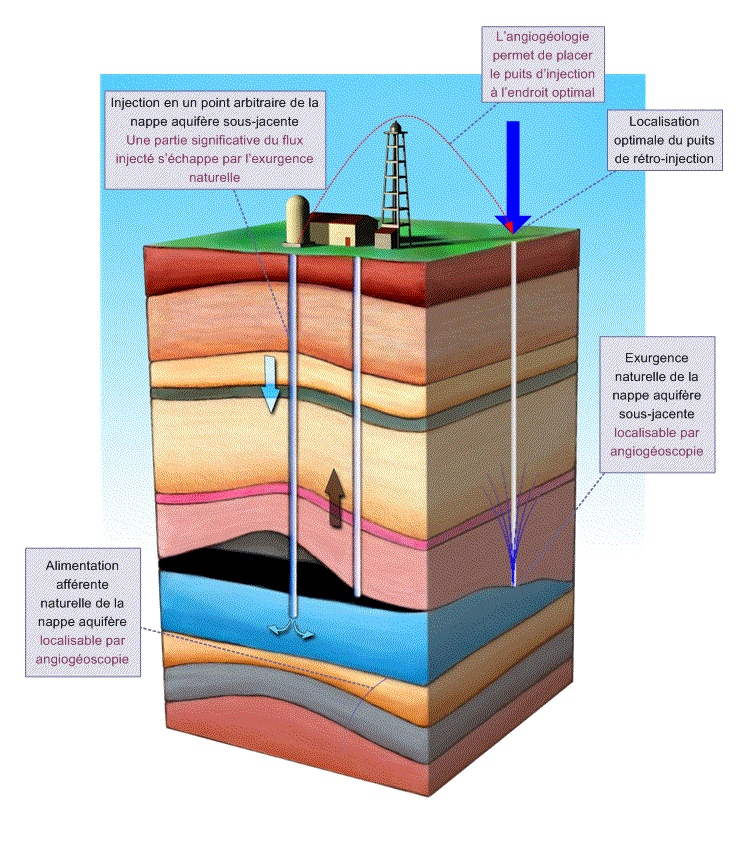Other Hydrogeological Services
Besides "classical" hydrogeological services (such as the ones that make up our core business), we also specify the optimum drilling location for oil recovery by water retro-injection or the drilling locations to representatively assess the extent of an underground water pollution. These services are also eligible for result-based fee.
Oil Recovery by retro-injection of Water
Oil recovery aims at extracting remaining oil from an oil deposit when its exploitation dies out.
The principle of this service is illustrated on the figure below:
Oil is pushed upward by the ascending pressure exerted by an aquifer.
[Almost] all aquifers are integrated to an underground water flow (exceptions are really marginal). This flow is conveyed through water vessels. When water re-injection to recover oil is performed at a random location of the oil deposit, a substantial amount of that artificial flow evacuates through the natural leakage points of the aquifer. If this water retro-injection is done at the exact location of the natural leakage points of the aquifer, oil recovery is dramatically improved. The natural exurgence points of the aquifer below the oil deposit constitute therefore the optimal injection points. As this flow goes "counter-current", it is called retro-injection.
Angioo contribution to oil recovery consists in identifying the natural exurgence points of the oil deposit underlying aquifer. By selecting precisely this very spot one minimizes the amount of water to reinject and one maximizes the amount of recovered oil. In the most favorable cases - and depending on the lithospheric context - the quasi totality of the oilfield can be recovered.
This oil-recovery service is subordinated to the presence of an aquifer below the oil deposit (which is, by far, the most frequent situation).
Selecting Representative collecting points to assess the contamination of aquifer
Thgis is another service provided by Angioo.
When an aquifer is contaminated by pollutants, it is always difficult to assess the extent of that pollution based on samples taken in the vicinity of the source of contamination. An hydrological system can be extremely vast and convey the pollutants over a long distance through the water vessels. This also implies that drilling at another location than the water vessel yields a completely different result than at the very location of the water vessel. Drilling made in a random location in the vicinity of a pollution source can have misleding results over the extent of the pollution.
Through its search technique Angioo determines the most representative drilling points to assess the effective contamination of aquifers. These drilling points correspond precisely with the leakage points of the polluted aquifers.

